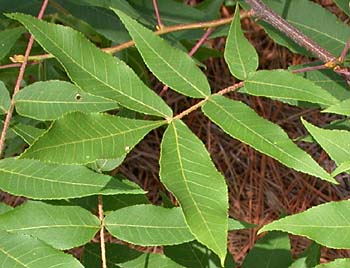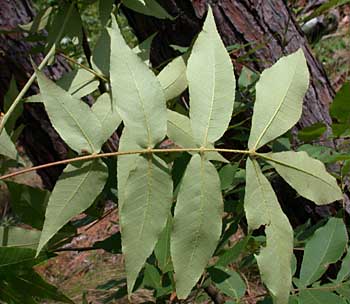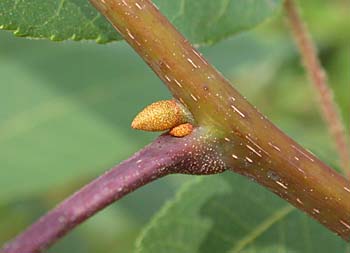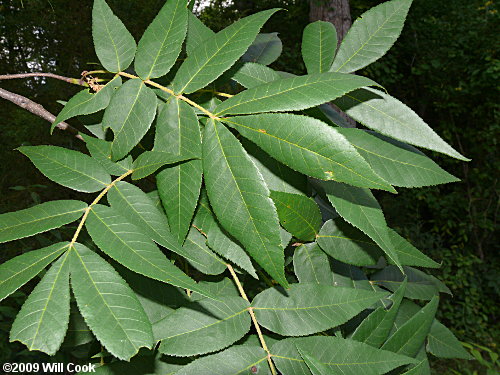
| Sand Hickory is tree of dry, sandy soil. Found throughout North Carolina, it is most common in the Coastal Plain, especially the Sandhills region. The leaves usually have 7-9 leaflets with a scruffily pubescent rachis. The leaves are spicily fragrant, like those of the other tetraploid hickories of section Carya (alba, glabra, and ovalis). Wake Co., NC 5/23/09.
|
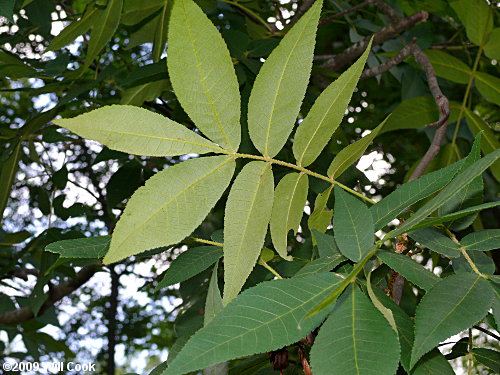
| Leaf undersides are paler, covered with silvery scales. Wake Co., NC 5/23/09.
|
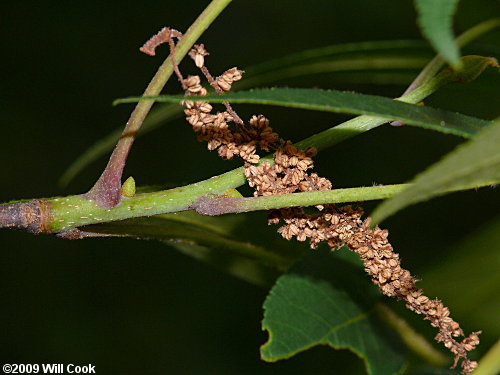
| Fallen staminate catkins. Note the reddish petiole bases, typical for Sand Hickory. Wake Co., NC 5/23/09.
|
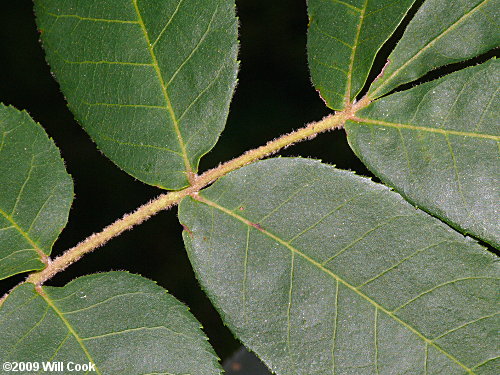
| Leaf upperside detail, showing the scruffily pubescent rachis. Wake Co., NC 5/23/09.
|
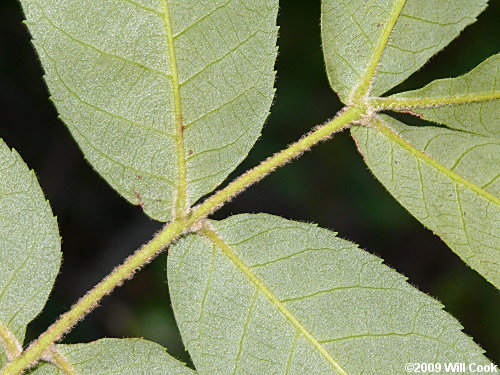
| Leaf underside detail, showing the tiny silvery scales. Wake Co., NC 5/23/09.
|





